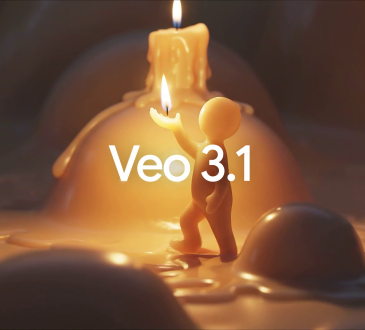
Artificial intelligence is transforming the way we work, learn, and live. But until recently, the conversation around A.I. was largely dominated by the tech giants in the United States and China.
Now there is a new voice coming from an unlikely part of this hemisphere: Latin America. It’s called Latam-GPT, and it’s much more than another AI model — it’s a dare to say the region is ready to start molding its own technological fate.
The Spark Behind Latam-GPT
The origin story of Latam-GPT starts with a question posed by a lot of people in the region:
Why are we relying on technologies created thousands of miles away, trained mostly on English data, and designed for other cultures?
From that question arose action. A group of developers, researchers, and dreamers from throughout Latin America came together to create something else.
- They wanted an AI that could understand far more than just Spanish and Portuguese.
- They wanted an AI that could recognize the thousands of voices across the continent, from the city centers to the far corners where indigenous languages are still spoken.
- And they wanted it to be accessible — not locked away behind paywalls or controlled by corporations.
That is how Latam-GPT was born: a large language model, open source by design, developed by Latin Americans, for Latin Americans.
Why Open Source Changes Everything
If you have ever worked in a closed AI system, you will be familiar with the feeling of limitation:
- Limited access
- Expensive subscriptions
- Features that pose a do-it-yourself challenge
Latam-GPT flips that model on its head.
Since it’s open-source:
- Anyone can look at the code, modify it, and build on top of it.
- A startup in Argentina could customize it for legal research.
- A teacher in Peru might use it to make a digital tutor in Quechua.
- A nonprofit group in Mexico could use it to preserve indigenous stories.
The principle is simple: the technology is for everybody, not just a handful of people.
And this transparency ripples outward:
- Students can experiment with the model in university laboratories.
- Innovators can design new apps without huge budgets.
- Governments could try AI services for citizens without depending on foreign companies.
That’s the real power of open source — it removes barriers so more people can join the AI revolution.
An AI That Speaks the Languages of the Region
Here is where Latam-GPT really sets itself apart: It speaks the languages of Latin America.
Most mainstream AI models have been trained with an overwhelming focus on English data. Latam-GPT, however, has been trained heavily on:
- Spanish
- Portuguese
- And, impressively, indigenous languages such as Guarani, Nahuatl, and Quechua — languages not normally addressed in the tech world.
This is what makes the AI feel more human and more real.
- A farmer in Bolivia can learn about climate change in his own dialect.
- A Brazilian entrepreneur can receive customer support in natural Portuguese.
- A student in Colombia can learn history through AI-generated summaries that sound written for her culture, instead of borrowed from someone else’s.
Built Through Regional Collaboration
“If there is something that continues to impress me at Latam-GPT, it is how this meeting of people happens. Latin America is frequently said to be fractured in terms of research and technology. But this effort has somehow brought together programmers, scholars, and innovators across borders.”
- Brazil and Chile contribute code.
- Argentine and Colombian universities swap research.
- Data on indigenous languages in Mexico are reported by community groups.
It’s a mosaic of cooperation that mirrors the diversity of the continent itself.
And it’s not merely about the tech — it’s about pride.
With Latam-GPT, Latin America finally has a homegrown success story: proof that the region doesn’t always have to look to Silicon Valley or Beijing for solutions.
Real-World Impact
The range of potential applications for Latam-GPT is as diverse as the region itself:
- Education: A zany classroom tutor, aiding children with homework or crafting curriculum for teachers.
- Healthcare: A bridge between doctors and patients who do not share a language, or a tool to route medical records.
- Government: Chatbots that walk citizens through tax forms or social benefits.
- Business: Small companies can adopt it for customer service, content creation, or marketing — all without paying Silicon Valley prices.
- Culture: A digital tool for conserving languages and stories that might otherwise be lost to time.
All of these examples illustrate how AI can be more than just a buzzword. Within Latin America, it can be pragmatic, accessible, and deeply embedded in human existence.
The Roadblocks Ahead
Of course, Latam-GPT is not without its obstacles.
- Training and running a large AI model takes a huge amount of computing power, rarely cheap or easy to sustain.
- Funding is another challenge — open-source projects often rely on community support and public investment rather than multi-billion-dollar corporate backing.
- Like any AI, it is vulnerable to bias, misinformation, and accuracy issues.
But such challenges are not distractions from the larger picture. In fact, they highlight why a project like this matters: because the region is grappling with both the opportunities and the burdens of AI.
A Vision That Resonates
At the end of the day, Latam-GPT is bigger than software. It’s a symbol.
It’s a region telling itself:
We deserve technology that speaks our languages, tells our stories, and serves our people.
The worldwide race for artificial intelligence can sometimes feel like a rich-country’s game, a battle for money and supercomputers.
What Latam-GPT provides instead is another vision of innovation: one built on inclusivity, cooperation, and cultural pride.
At its grandest potential, as the project expands into other communities, it could inspire other regions to do the same — to create AI that is not only global, but also local, personal, and profound.
Latin America has always been a land bursting with stories, resilience, and creativity. With Latam-GPT, it is proving that it can also be a land of technological leadership.
And that may be its most powerful message of all.




